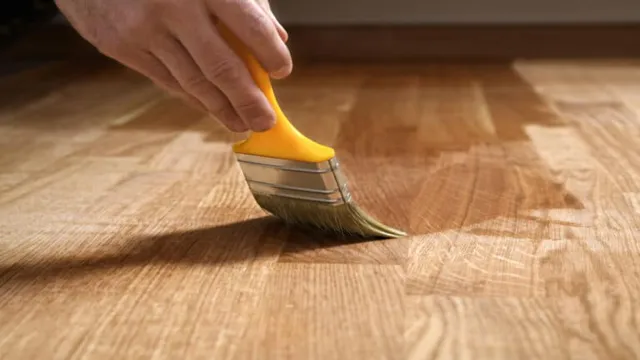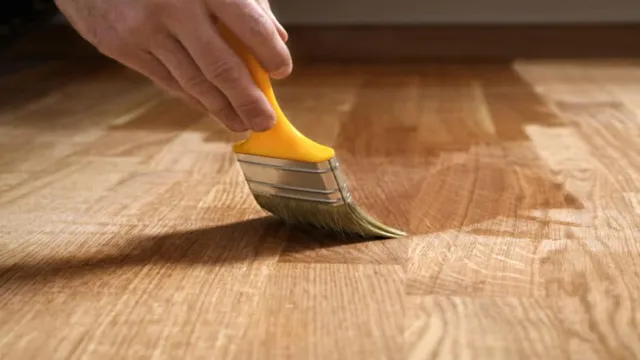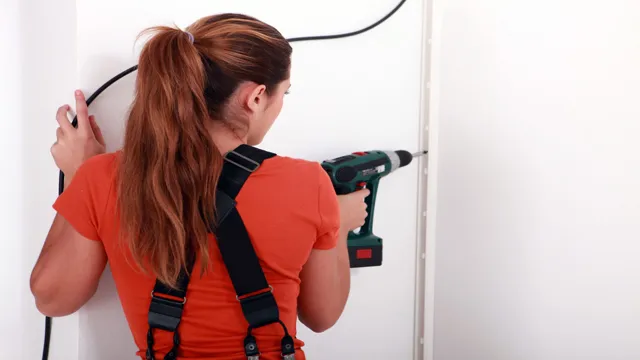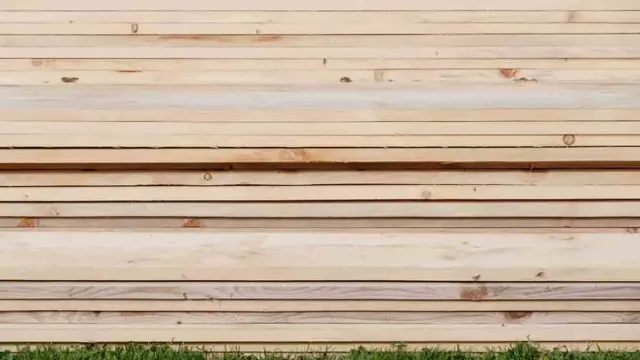How to Measure for a Mitre Cut: Tips and Techniques for Accurate Results

Mitre cuts are one of the most common cuts used in woodworking, especially when it comes to creating frames and cornices. But, measuring for a mitre cut can be challenging for beginners. How do you ensure that your angles are precise and your pieces fit together flawlessly? In this blog post, we’ll show you how to measure for a mitre cut and give you some tips for making the process easier.
So grab your measuring tape and let’s get started!
What You Will Need
When it comes to measuring for a mitre cut, you’ll need a few specific tools and materials to ensure that your cut is accurate and precise. First, you’ll need a measuring tape or ruler to measure the length and width of the surface area that you’ll be cutting. Next, you’ll need a mitre saw, which is a specialized saw designed for making angled cuts.
Some saws even come with built-in guides to make it easier to set the angle of your cut. Additionally, you’ll need safety equipment such as goggles, gloves, and a dust mask to protect yourself from debris or sawdust. Finally, you may want to consider using a marking tool such as a pencil or chalk to make precise lines on your material, helping you to achieve a cleaner, more accurate cut.
With these tools in hand, you’ll be well-equipped to measure for a mitre cut and tackle all sorts of DIY projects with confidence.
Measuring Tape or Ruler
When it comes to measuring things, whether for a home project or a fashion design DIY, having the right tools is essential. Two of the most commonly used tools for measuring are a measuring tape and a ruler. A measuring tape is a flexible tool that can measure lengths and widths of curved or rounded surfaces.
On the other hand, a ruler is a rigid tool that can measure straight lines and angles. Both tools have their advantages and disadvantages that you need to consider based on what you are measuring. When using a measuring tape, you will need to make sure it is straight and level for accurate measurements.
You will also need to be careful when reading the measurements as the tape can be difficult to read at times. Measuring tapes are great for measuring things like the circumference of a waist or the length of a curtain rod. However, if you are measuring a straight line or an angle, a ruler might be a better choice.
Rulers are easier to read and can give you more accuracy because they are rigid. Regardless of which tool you decide to use, it is essential always to double-check and make sure you are measuring correctly. Mistakes can be costly and lead to inaccurate measurements that could ruin your project.
Also, remember that both tools come in different sizes and units of measurements, so choose the appropriate tool for the job at hand. In conclusion, both measuring tapes and rulers have their advantages and disadvantages. So, choose the one that suits your needs the most and always double-check for accuracy.
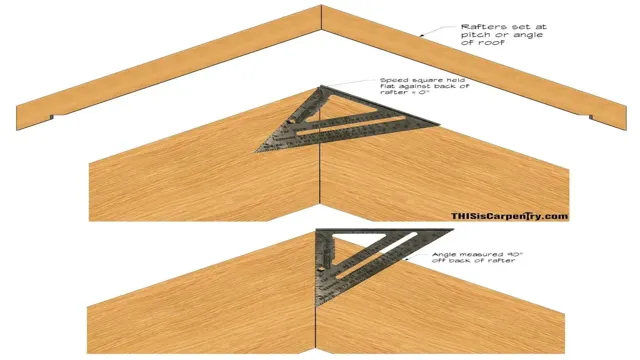
Pencil or Marker
When it comes to creating art or writing, one common question that arises is whether to use a pencil or a marker. The answer is not a simple one, as both have their own advantages and disadvantages depending on what you aim to achieve with your work. If you’re looking for versatility and flexibility, a pencil is a great choice.
You can easily erase any mistakes and make changes without having to start over. Also, pencils come in different types of leads, from soft to hard, making it easier to shade or create different levels of darkness. On the other hand, markers are ideal for creating bold and vibrant colors that stand out.
They are also great for creating a fluid and smooth line, which can add a striking touch to an artwork or text. Whether you choose a pencil or a marker, you’ll also need some other supplies to get started. For pencils, you will need sharpeners, erasers, and a sketchpad or paper.
Advanced artists may prefer using different pencil types for more varied work. For markers, you will need a clean and smooth paper surface to avoid smudges, as well as a variety of colors. The type of paper is particularly important with markers to avoid bleeding through the sheet.
In the end, the choice between pencils or markers comes down to personal preference, style, and the type of project you’re working on. Both have their own unique advantages and it’s up to you to decide which one to use to create your masterpiece. Whether you’re a beginner or an experienced artist, taking the time to experiment with both will allow you to figure out what works best for you and your creative goals.
Protractor
Protractor Protractor is an end-to-end testing framework for Angular and AngularJS applications. To get started with Protractor, there are a few things you will need. Firstly, you will need Node.
js installed on your machine, as Protractor is an npm package. Once Node.js is installed, you can install Protractor by running the command “npm install -g protractor” in your terminal or command prompt.
Additionally, you will need a web driver to run your tests in a browser. Protractor supports several browsers, including Chrome, Firefox, and Safari. You can install the web driver for your chosen browser by running the command “webdriver-manager update”.
Protractor also requires a configuration file to set up your test environment. This file can include settings such as the browser driver location and the URL of the application you wish to test. With these few requirements met, you can begin writing end-to-end tests for your Angular or AngularJS application using Protractor.
Determining the Angle
If you’ve ever had to make a cut at an angle, you know that determining the exact angle can be a bit tricky. When you need to make a mitre cut, it’s especially important to get the angle just right in order to ensure a clean, professional-looking result. So how do you go about measuring for a mitre cut? First, you’ll need a protractor to measure the angle you want to cut.
Next, mark the point where you want to make your cut, and use your protractor to determine the angle. Be sure to double-check your measurements before making any cuts, and remember that it’s always better to err on the side of caution and cut a little too long rather than too short. With a little practice and patience, you’ll soon be making accurate mitre cuts like a pro!
Identify the Angle Needed for Your Cut
Determining the angle needed for your cut can seem like a daunting task at first, but it’s actually a lot simpler than it seems. First, you’ll want to identify the type of cut you need to make – whether it’s a miter cut, bevel cut, or a combination of the two. Once you’ve determined the type of cut you need, you can then use a protractor or angle finder to measure the angle needed.
It’s important to ensure that your measuring tool is calibrated properly to get accurate results. Another essential thing to keep in mind is that the angle measurements are taken from the surface that the saw will be resting on, not the material being cut. With these simple steps, you’ll be able to determine the angle needed for your cut with ease.
Using a Protractor to Measure the Angle
If you want to determine the angle between two lines or the angle of a shape, using a protractor is a simple and effective method. First, place the baseline of the protractor onto one of the lines, making sure that the center of the protractor is aligned with the point where the lines meet. Then, locate the number on the protractor that corresponds to the direction of the second line, and line it up with the baseline.
Finally, read off the number at the point where the second line intersects with the protractor, and subtract this number from the first number to determine the angle. It’s important to ensure that the protractor is centered on the meeting point of the lines, and that the lines are straight and aligned with the baseline. With a bit of practice, using a protractor can become an easy and accurate way to measure angles.
Mark the Angle onto the Material
When working with materials, it’s crucial to determine the angle accurately. The first step is marking it onto the material. To do this, you need a protractor or another tool to measure the angle.
Once you have your tool, place it on the material and align it with the reference point or edge. Then, mark the angle onto the material using a pencil or marker. It’s essential to be precise and double-check your measurement before marking the angle, as a small mistake can throw off your entire project.
By taking the time to accurately determine the angle and mark it onto the material, you’ll set yourself up for success and ensure that your finished product is of high quality.
Making the Cut
When it comes to making a precise and accurate mitre cut, measuring is crucial. Before making the cut, it’s essential to measure the angle required accurately. To start, place the piece of wood that needs cutting on the saw’s base and set the saw to the desired angle.
Next, measure the length of the cut required and mark it on the wood’s edge. Use a pencil or a sharpie to make the mark visible enough. Once you have made the mark, double-check the measurement to ensure it’s precise before proceeding to cut.
Remember to hold the wood securely against the fence with one hand while cutting with the other. With these simple steps, you can ensure that your mitre cut is accurate, precise, and ready for use.
Use a Mitre Saw or Hand Saw to Cut the Material
When it comes to making the perfect cut for your project, you have two great options for cutting your material – a mitre saw or a hand saw. A mitre saw is a fantastic option for those who want to make precise and accurate cuts quickly and easily. Its sharp blade offers precision cutting that is ideal for creating perfect angles and dimensions.
However, if you’re looking for a slower and more hands-on approach, a hand saw is an excellent choice. Not only does it offer more control, but it also gives you the opportunity to get a great feel for the material you’re cutting. Both options offer their own unique advantages, so it’s up to you to decide which one is the best fit for your project.
Whatever you choose, remember to take your time, measure twice, and cut once to ensure your project turns out to be a huge success!
Double Check Your Measurements Before Cutting
Double Check Your Measurements Before Cutting When it comes to DIY projects, accuracy is everything. The slightest miscalculation or misreading of measurements could lead to an entire project being ruined. One of the most important things to remember before making any cuts is to double-check your measurements.
It is crucial to take the time to measure and remeasure before committing to a cut. Even a small discrepancy in measurements can cause major problems down the line. It’s always better to be safe than sorry, so take the extra time to make sure everything is perfectly measured before making any cuts.
Trust me; it’s much easier to make adjustments before making cuts, than trying to fix mistakes afterward. Don’t let impatience lead to costly errors, take your time and double-check those measurements.
Conclusion
In conclusion, measuring for a mitre cut is a precise art that requires attention to detail and skill. It’s not just a matter of cutting angles, but rather, understanding the angles and the materials being used. So, whether you’re a seasoned carpenter or a DIY enthusiast, make sure to take the time to measure twice (or thrice) and cut once.
And always remember, the key to a perfect mitre cut is to think before you chop – it’s not just about brute force, but finesse and accuracy. Happy cutting!”
FAQs
What tools are required to measure for a mitre cut?
To measure for a mitre cut, you will need a measuring tape, a protractor, and a pencil.
How do I measure for a mitre cut on a piece of wood?
To measure for a mitre cut on a piece of wood, first mark the length and width of the cut on the wood. Then, use a protractor to determine the angle and mark the angle on the wood with a pencil.
What is the difference between a mitre cut and a bevel cut?
A mitre cut is an angled cut that is made across the width of a piece of wood, while a bevel cut is an angled cut that is made across the thickness of a piece of wood.
How do I adjust the angle of my mitre saw for a precise cut?
To adjust the angle of your mitre saw, loosen the locking knob or lever and rotate the saw blade to the desired angle. Then, tighten the locking knob or lever to secure the blade in place.
How do I ensure that my mitre cuts are accurate and precise?
To ensure that your mitre cuts are accurate and precise, always measure and mark your cuts carefully, use a sharp saw blade, and make sure that your saw is properly calibrated.
What is the best way to make a mitre cut on a crown molding?
The best way to make a mitre cut on a crown molding is to use a compound mitre saw, which allows you to adjust both the angle and the tilt of the saw blade.
Can I make a mitre cut without a mitre saw?
Yes, you can make a mitre cut without a mitre saw by using a hand saw and a mitre box, which allows you to make angled cuts with precision and accuracy.

